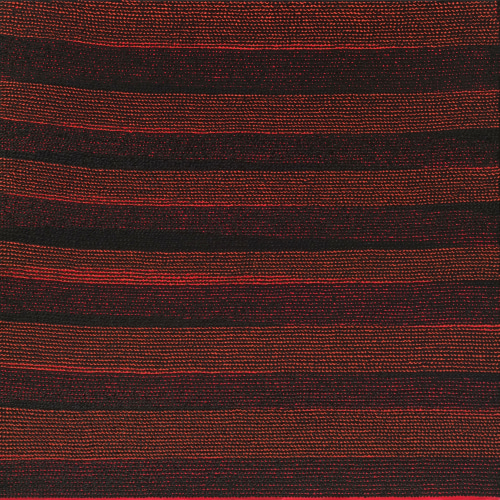
Because she is a woman, Madeleine Keesing's meticulously executed paintings composed of thousands of individual drops of paint sometimes have been described as "feminist" works. Because she adheres to a rigorously simple technique, her art has been analyzed in terms of "minimalist" practice.
Neither of these ways of talking about Keesing's work really gets to the heart of the matter, however. Her newest paintings, on view at Goya Contemporary, fairly shout their main reason for being. It is color, color, color!
Keesing undoubtedly was influenced by the feminist movement of the 1970s and the artworks that came out of that era. Her canvases do have an obsessive quality that is akin to the repetitive character of such traditional women's crafts as sewing, weaving and embroidery.
So, too, the ethos of minimalism and post-minimalism is apparent in the severity of her unvarying approach to painting: row upon row of tiny dots of pigment, each no larger than a fingernail, arrayed with military precision in horizontal lines across the canvas from top to bottom. (The effect is nearly impossible to reproduce in the illustration accompanying this article.)
Yet the obsessive, repetitive quality of Keesing's work and its unvarying technique are but means to a larger end, not ends in themselves. These constants of Keesing's art allow her the utmost freedom to explore her true subject, which is pure color and its plangent, bittersweet harmonies.
Keesing, who has lived in the Washington area for more than 25 years, is an obvious heir to the pioneering efforts of the Washington Color School artists of the 1960s, and she shares their fascination with the subtle effects produced by interacting hues.
In spirit, Keesing may be closest to Color School painter Gene Davis, who in the late 1950s hit upon the stripe as a formal device for exploring the visual and emotional possibilities of color interaction.
Keesing's use of paint drops arranged in horizontal lines in some ways parallels Davis' experiments with vertical stripes. But where Davis often favored bright primary and secondary hues -- fire-engine reds, lime greens and lemon yellows -- Keesing is drawn to subtler color modulations: cranberry and taupe, avocado and violet, fuchsia, beige and cream.
Moreover, Keesing's method of layering her canvases with overlapping lines of color allows for far more complex color harmonies than Davis' relatively straightforward tonal progressions.
A Keesing canvas, for example, might start out with four or five broad bands of flat color stained into the raw, unprimed canvas, a la Helen Frankenthaler's color field paintings of the 1960s. The stained areas serve as a kind of underpainting, or ground, for the lines of paint drops that will cover them.
Those layers of colored dots give Keesing's paintings the appearance of densely woven textiles or rippling waves and transform the static surface of the canvases into fluctuating fields of energy and movement.
These are surely among the most accomplished works Keesing has produced to date, and they more than confirm her place among the major artistic heirs of the Washington Color School.